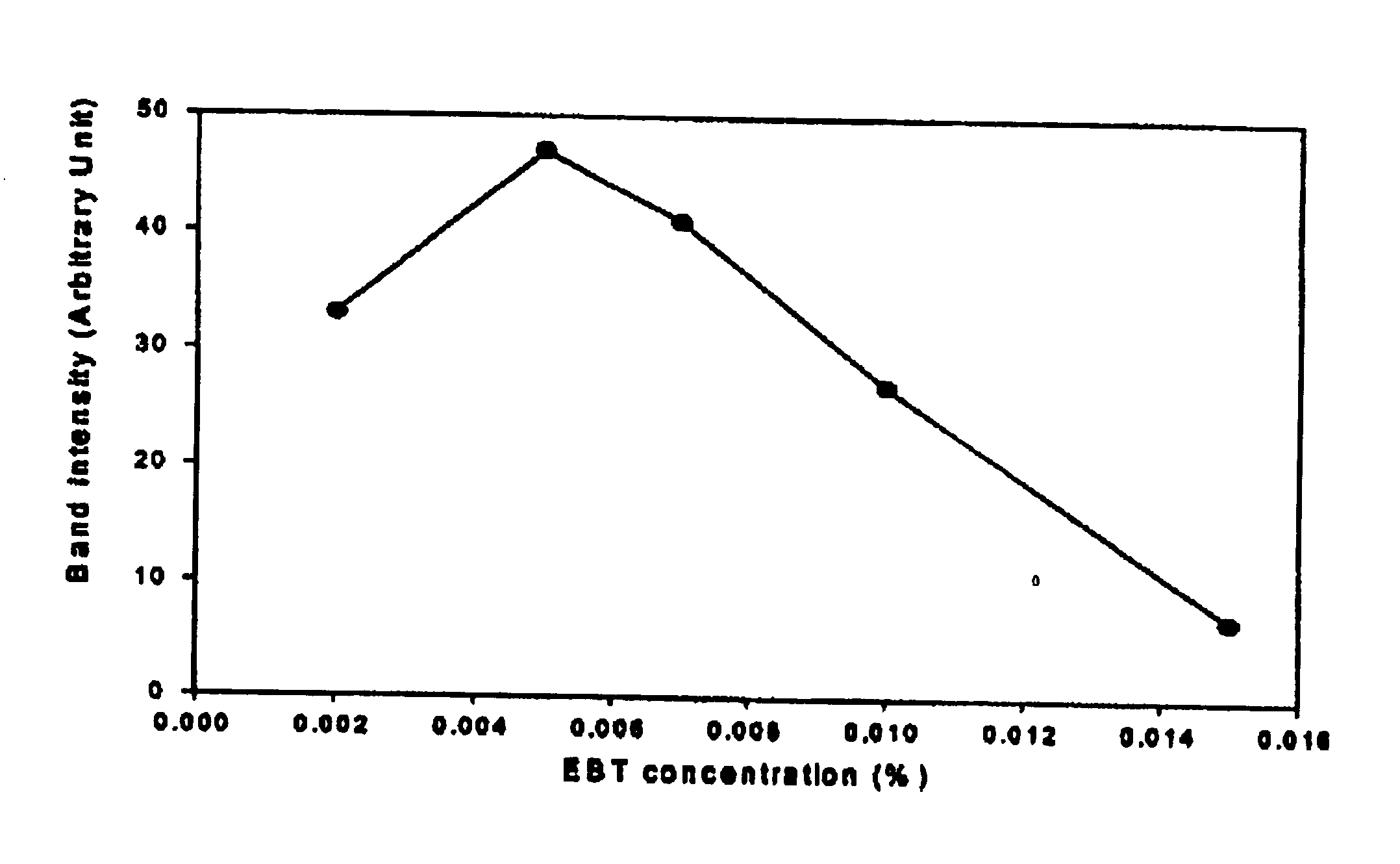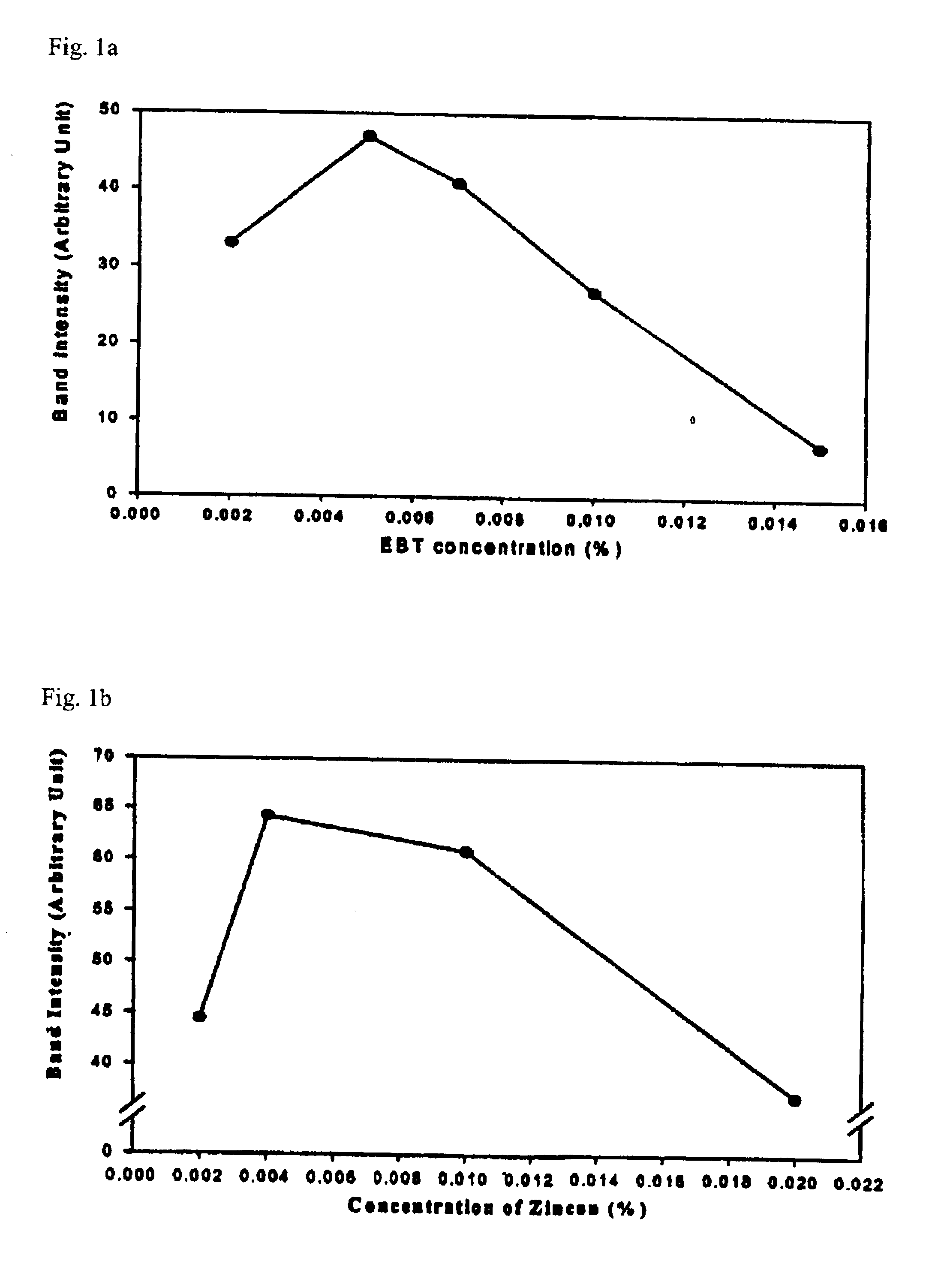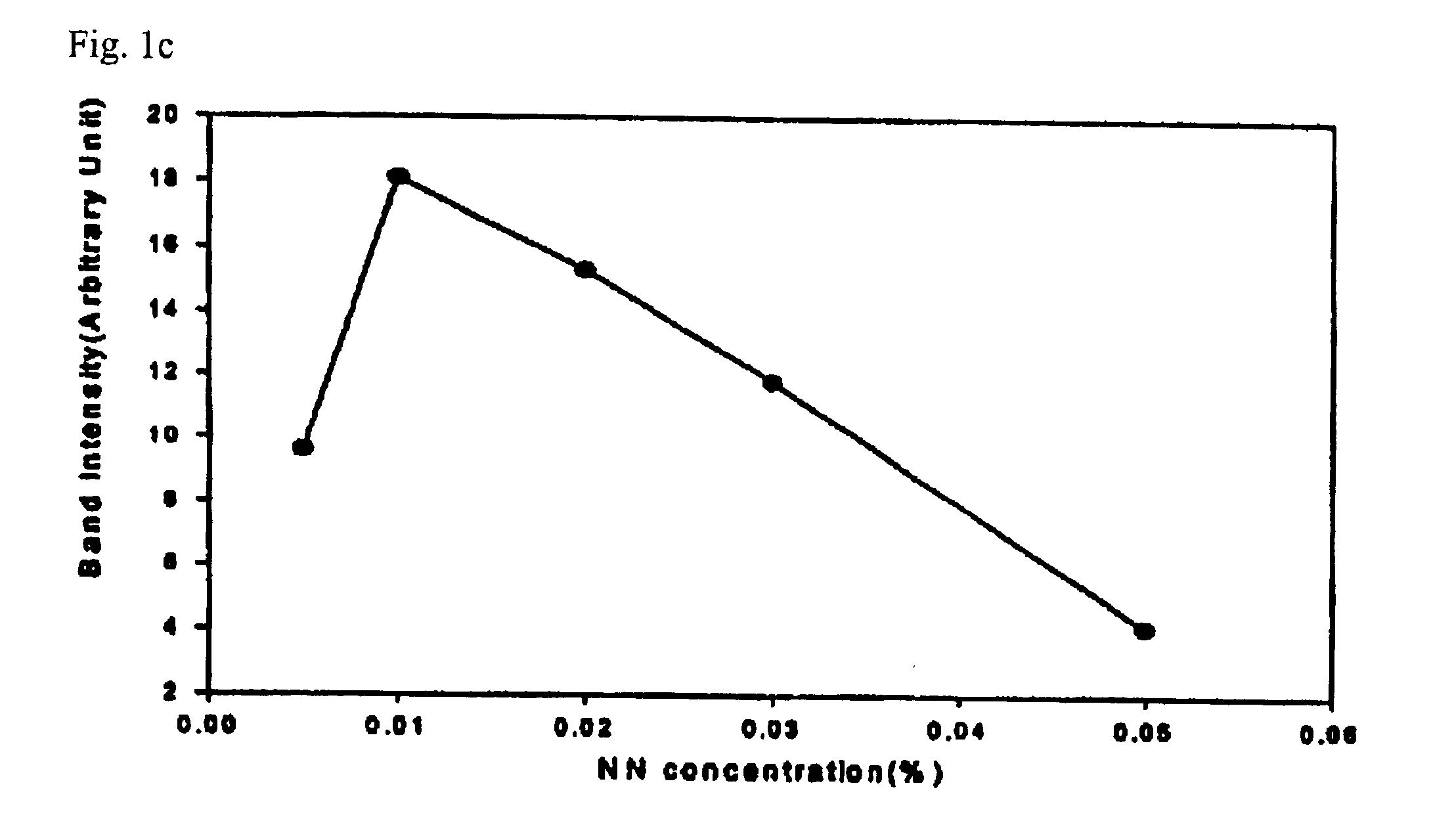Detection method of proteins on polyacrylamide gels using a dye composition as a silver ion sensitizing agent and the dye composition for the same
a polyacrylamide gel and protein detection technology, applied in the field of protein detection on polyacrylamide gel, can solve the problems of not having such good sensitivity, long time for staining and destaining, and complicated handling, so as to maximize the effect of the dye-silver staining method and efficiently stain the protein band
- Summary
- Abstract
- Description
- Claims
- Application Information
AI Technical Summary
Benefits of technology
Problems solved by technology
Method used
Image
Examples
examples 1 to 4
(1) Preparation of Gel and Electrophoresis
[0044]An SDS-containing slab gel was prepared according to the Laemmli's method. A concentration of protein was determined by Bradford method (Anal. Biochem. 151, 369-374) using Standard I for the quantitation of protein (Bio-Rad Corp.). Before performing electrophoresis, protein standards, myosin (205 kDa), β-galactosidase (116 kDa), phosphorylase b (97.4 kDa), BSA (66 kDa), ovalbumin (45 kDa), and carbonic anhydrase (29 kDa), were mixed at the same amount as a protein sample, and the above mixture was heated to 100° C. in a sample buffer solution (70 mM Tris-HCl, pH 6.8, 11.4% glycerol, 3% SDS, 0.01% bromophenol blue, β-mercaptoethanol) for 5 minutes. The solution was loaded onto wells at concentrations of 10, 5, 2.5, 1.2, 0.6, 0.3, 0.15, 0.08, 0.04 and 0.02 ng per protein band in order from the left well. A developing buffer solution was the solution containing 0.025 M Tris, 0.2 M glycine, and 0.1% SDS, the pH of which was 8.3. The gel ha...
examples 5 to 8
(1) Preparation of 2D Gel and Isoelectric Focusing (IEF)
[0047]For re-swelling an isoelectric focusing gel, an isoelectric focusing gel strip (7 cm, pH 4 to 7) manufactured by Pharmacia was immersed in a re-swelling buffer solution containing a sample for 12 hours to load the sample simultaneously with re-swelling the isoelectric focusing gel. The sample had a total volume of 125 μl by adding 8 μl of DTT and 114.2 μl of a re-hydration buffer solution to E. Coli BL21 (25 μg / 2.8 μl). For electrophoresis of the isoelectric focusing gel, the above focusing gel was transferred to an IEF tray, and electrophoresis (gel focusing) was carried out with circulating cooling water for 4 hours. EPS 3501 XL power supply was used as the power for electrophoresis and an electric voltage was slowly increased as follows: 0 to 200 V for 2 minutes; 200 to 3500 V for 90 minutes; and 3500 V for 150 minutes. After performing the gel focusing as described above, 5 ml of an equilibrium buffer solution and 50 ...
PUM
| Property | Measurement | Unit |
|---|---|---|
| pH | aaaaa | aaaaa |
| pH | aaaaa | aaaaa |
| pH | aaaaa | aaaaa |
Abstract
Description
Claims
Application Information
 Login to View More
Login to View More - R&D
- Intellectual Property
- Life Sciences
- Materials
- Tech Scout
- Unparalleled Data Quality
- Higher Quality Content
- 60% Fewer Hallucinations
Browse by: Latest US Patents, China's latest patents, Technical Efficacy Thesaurus, Application Domain, Technology Topic, Popular Technical Reports.
© 2025 PatSnap. All rights reserved.Legal|Privacy policy|Modern Slavery Act Transparency Statement|Sitemap|About US| Contact US: help@patsnap.com



